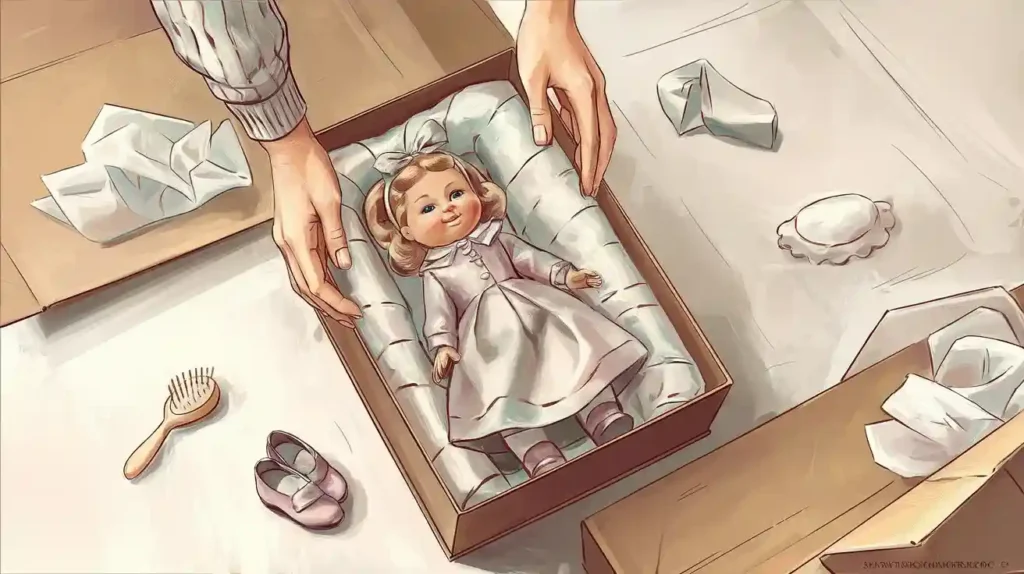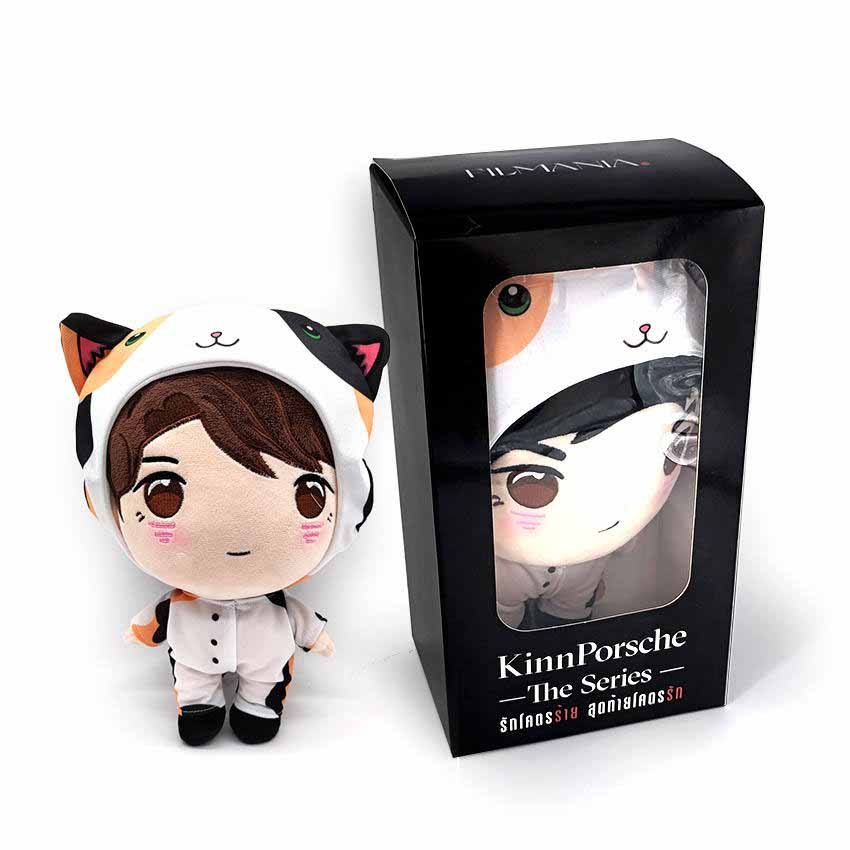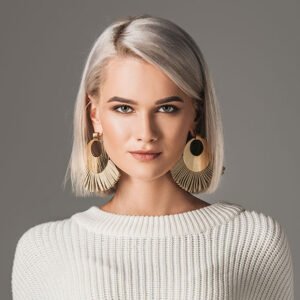
Doll packaging plays a vital role for collectors who want to keep their collectibles in top condition. Most collectors report that improper storage leads to damage, including fading from sunlight, dust buildup, and warping from humidity. Using Doll Packaging Boxes, Custom Printed Doll Boxes, and archival-quality materials helps prevent these common issues.
Key Takeaways
Use acid-free, breathable materials like archival boxes and tissue to protect dolls from dust, light, and moisture damage.
Choose packaging that fits snugly with enough padding to prevent movement and damage during storage or shipping.
Store dolls in climate-controlled areas away from sunlight and humidity, and inspect them regularly to keep them in top condition.
Choosing Doll Packaging

Materials
Selecting the right materials for doll packaging ensures long-term preservation and protection. Museum conservators recommend acid-free archival storage boxes, archival tissue, and preservation materials. These materials prevent deterioration and help maintain the doll’s original appearance. Collectors often use SafeView storage boxes for both protection and display, while cube storage boxes made from acid-free corrugated board work well for odd-shaped items. Artifact storage boxes with metal edges provide extra durability for flat or delicate dolls.
Tip: Wrap fragile dolls in acid-free tissue or unbleached muslin before placing them in archival boxes. This extra layer shields the surface from dust, light, and accidental scratches.
Vinyl dolls require special care. Sealed plastic bags can trap moisture, leading to mold or mildew. Instead, collectors should use breathable materials and include silica gel packets to absorb excess moisture. Regularly checking stored dolls helps catch early signs of damage.
Common Materials for Doll Packaging
Material | Purpose | Best For |
|---|---|---|
Acid-free tissue | Wrapping, lining | All dolls |
Unbleached muslin | Wrapping, support | Fragile dolls |
Archival storage boxes | Long-term storage, display | Collectibles, display |
Plastic bins (vented) | Short-term storage, transport | Durable dolls |
Bubble wrap | Cushioning during shipping | Fragile dolls |
Fit and Size
Proper fit and size play a crucial role in the best toy packaging. Boxes that are too large or too small can compromise the structural integrity of the packaging. A box that fits well, combined with adequate cushioning, protects fragile dolls from bumps and drops during storage or transport.
Collectors should match the box size to the specific type of doll. For example, standard Barbie boxes measure about 13 inches in length, 3.5 inches in width, and 13 inches in height. Travel-size boxes are smaller, while collector’s edition boxes may be larger and more ornate to accommodate accessories. Life-size promotional boxes can reach up to six feet in height. Customizing the packaging size for each doll type ensures both protection and visual appeal.
Note: Always choose a box that allows for a snug fit with enough room for padding. Avoid overstuffing or leaving too much empty space, as both can lead to damage.
Original vs. Replacement Packaging
Original packaging often increases a doll’s resale value. Collectors pay higher prices for dolls that include their original boxes, outfits, and accessories. For example, a Madame Alexander doll in its original box sold at auction for a much higher price than similar dolls without original packaging. Terms like “NIB” (new in box) or “MIB” (mint in box) attract buyers, but collectors should verify these claims carefully.
Replacement packaging serves as an alternative when the original box is missing or damaged. Plastic packaging offers affordability, durability, and protection from dust and moisture. Wooden or plastic crates provide strong rigidity for storage and transport. Bubble wrap cushions fragile dolls, while paper or jute bags offer eco-friendly options with less impact resistance.
Tip: When using replacement packaging, prioritize materials that offer both protection and breathability. Photograph the doll and its packaging for records, especially if planning to resell.
Types and Methods
Types of Doll Packaging
Collectors can choose from a wide range of packaging options, each with unique benefits and drawbacks. The table below compares the most common types:
Packaging Type | Advantages | Disadvantages |
|---|---|---|
Simple Packaging (OPP/PE bags, PVC/PET boxes) | Cost-effective, space-saving, dust protection; transparent boxes offer product visibility and moderate protection | Bags have limited visual marketing appeal and can tear; PVC/PET boxes can scratch and cost more |
Paper-based Packaging (Standard paper box, window paper box, corrugated box) | Eco-friendly, good for branding and printing, durable (especially corrugated), product visibility with window boxes | Paper boxes cost more than plastic bags; window areas are fragile; corrugated boxes less visually appealing |
Blister and Clamshell Packaging | High product visibility, protects product, premium look, good for small collectibles | Higher cost due to mold creation, difficult to recycle, not suitable for low volume production |
Canned/Bottled Packaging (Tin cans, plastic jars) | Premium appearance, reusable, strong protection, good for collectibles and tactile products | Higher cost, plastic less eco-friendly, tin cans more expensive |
Special Packaging (Blind boxes, fabric pouches, inflatable air columns) | Creates surprise effect (blind boxes), reusable and eco-friendly feel (fabric pouches), excellent protection (air columns) | Blind boxes can disappoint buyers, fabric pouches offer limited protection, air columns add cost and packing complexity |
E-commerce/Transportation Packaging (Mailer boxes with foam inserts, bubble wrap) | Excellent protection during shipping, reduces returns, meets shipping guidelines | Higher cost, less attractive unboxing experience |
Transparent window boxes and clear plastic packaging allow collectors and buyers to view the doll’s features and accessories without opening the box. This visibility builds trust and helps buyers make informed decisions. Transparent packaging also protects against dust and scratches, while window boxes combine the benefits of display and protection. Opaque boxes, on the other hand, offer more privacy and block light, which can help prevent fading.
Tip: For rare or valuable dolls, experts recommend using acid-free, breathable materials and avoiding airtight containers. Specialty containers provide extra protection but should allow airflow to prevent mold.
Packing Steps
Proper packing prevents damage and preserves value. Follow these steps for the best results:
Disassemble the doll or accessories if possible. Wrap each part separately with acid-free tissue, bubble wrap, or unbleached muslin.
Secure any moving parts with painter’s tape. Avoid packing tape, which can leave residue.
Add padding around all parts using bubble wrap, crumpled paper, or foam. Ensure padding is snug but not too tight.
Place the wrapped items in a sturdy box. For fragile dolls, use a double-boxing method: put the inner box inside a larger box with extra cushioning between them.
Fill empty spaces with loose foam peanuts or shredded paper to prevent shifting.
Seal the box with strong packing tape. Label the box clearly with “FRAGILE” and include shipping and return addresses.
Photograph the doll, packaging, and accessories before sealing. These images help with insurance claims and resale.
Note: Never pack multiple dolls loosely in one box. Each doll needs individual wrapping and padding to avoid collisions and damage.
Storage Tips
Long-term storage requires careful planning to maintain both the doll and its packaging solution. Collectors should:
Use archival-quality boxes and acid-free tissue to wrap each doll.
Store dolls in a climate-controlled environment, keeping temperatures between 60°F and 85°F and humidity between 40% and 60%.
Avoid attics, basements, or garages, which expose dolls to extreme temperature and moisture changes.
Block direct sunlight to prevent fading and material breakdown.
Include silica gel packs to control humidity and prevent mold.
Space dolls apart to prevent physical contact and damage.
Store accessories separately and label all boxes for easy identification.
Inspect dolls regularly and refresh storage materials as needed.
Callout: High-value or antique dolls benefit from closed cabinets in temperature-controlled rooms. Rotate displayed dolls to limit light exposure and always handle with clean, dry hands.
Improper storage can cause plasticizer loss in PVC, leading to brittleness, sticky surfaces, and discoloration. UV light, fluctuating temperatures, and sealed containers accelerate this degradation. Even with the best packaging options, regular inspection and climate control remain essential.
Shipping Tips
Shipping dolls safely requires extra precautions. The following steps help prevent damage during transit:
Wrap each doll in white tissue paper or bubble wrap, focusing on fragile parts like heads, hands, and feet.
For very fragile dolls, use an inner box and then place it inside a larger outer box with at least four inches of cushioning between boxes.
Fill all gaps with packing peanuts or foam to prevent movement.
Avoid using newspaper, which can transfer ink and does not cushion well.
Seal the wrapped doll in a plastic bag to protect against moisture, but never use sealed bags for long-term storage.
Label the box as “FRAGILE” and require an adult signature upon delivery.
Insure valuable shipments and keep tracking information.
Photograph the doll and packaging before shipping to document condition for insurance and resale.
Double-boxing and bubble wrap provide superior protection compared to single-boxing or padded envelopes. This method absorbs shocks and isolates the doll from external impacts, making it ideal for shipping fragile dolls or high-value collectibles.
Tip: Never ship dolls in their original boxes alone. Always use additional outer packaging to preserve both the doll and its original packaging.
Collectors who follow best practices—such as using acid-free materials, climate-controlled storage, and regular inspections—help preserve their collectibles for years.
Display dolls away from sunlight and moisture.
Clean gently and rotate displays.
Consistent care maintains both beauty and value.


